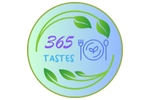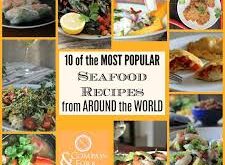In today’s health-conscious world, the debate between dairy and non-dairy products is more relevant than ever. Whether for health reasons, ethical concerns, or dietary preferences, many people are choosing alternatives to traditional dairy. But which option is truly better for you? In this article, we’ll break down the benefits and drawbacks of both dairy and non-dairy products to help you make an informed decision.

Nutritional Comparison
Dairy Products
Dairy products such as milk, cheese, and yogurt are well known for being rich in calcium, protein, and essential vitamins like B12 and D. They contribute to strong bones, muscle repair, and overall health. Here are some key nutritional benefits of dairy:
- High in Protein: Dairy provides complete proteins, containing all nine essential amino acids necessary for muscle and tissue repair.
- Rich in Calcium: Essential for bone health and preventing osteoporosis.
- Probiotics: Fermented dairy products like yogurt contain beneficial bacteria that support gut health.
- Vitamin D & B12: Important for immune function and red blood cell production.
Non-Dairy Alternatives
Plant-based milk alternatives such as almond milk, soy milk, and oat milk have surged in popularity. Many are fortified with vitamins and minerals to match the nutrient profile of dairy. Some advantages include:
- Lower in Calories & Fat: Many non-dairy alternatives contain fewer calories and less saturated fat than traditional dairy.
- Lactose-Free: Ideal for individuals who are lactose intolerant or have dairy allergies.
- Plant-Based Benefits: Often contain antioxidants and healthy fats that promote heart health.
- Dietary Fiber: Some plant-based options, like oat milk, offer additional fiber that supports digestion.
Health Considerations
Pros and Cons of Dairy Consumption
Pros:
- Supports strong bones and teeth
- Provides essential vitamins and minerals
- High in bioavailable protein
- Contains probiotics that aid digestion
Cons:
- Lactose intolerance affects a significant portion of the population
- May contribute to acne and inflammation in some individuals
- Higher in saturated fat and cholesterol
- Ethical and environmental concerns regarding dairy farming
Pros and Cons of Non-Dairy Alternatives
Pros:
- Suitable for lactose-intolerant and vegan individuals
- Often lower in fat and calories
- Ethical and sustainable choices available
- May include additional plant-based nutrients
Cons:
- Can be lower in protein (except for soy milk)
- May contain additives, stabilizers, or added sugars
- Nutrient absorption may vary compared to dairy
- Fortified versions may lack the same bioavailability as dairy nutrients
Environmental Impact
Dairy farming requires substantial resources, including land, water, and feed for livestock. The dairy industry also contributes significantly to greenhouse gas emissions. In contrast, plant-based alternatives, especially oat and almond milk, generally have a smaller environmental footprint. However, certain non-dairy options, like almond milk, require large amounts of water for production, so sustainability varies by choice.
Taste & Culinary Use
Taste preferences and culinary applications differ widely. Dairy milk has a creamy texture that works well in coffee, cereal, and baking. Cheese and butter are staples in many recipes. On the other hand, non-dairy alternatives like almond and oat milk offer diverse flavors and textures, making them popular in smoothies, desserts, and even coffee creamers. However, some plant-based options may have a thinner consistency or an altered taste compared to traditional dairy.
Which One is Right for You?
Ultimately, the choice between dairy and non-dairy depends on your dietary needs, health goals, ethical views, and environmental concerns. If you require high protein and essential nutrients, dairy may be the better option. However, if you are lactose intolerant, vegan, or looking for lower-fat alternatives, non-dairy milk is a great choice.
Final Thoughts
Both dairy and non-dairy options have their unique benefits and drawbacks. Understanding your body’s needs and lifestyle can help you make the right choice for your health and well-being. Whether you stick with traditional dairy or explore plant-based alternatives, always aim for high-quality, minimally processed products.
For more insights into healthy eating and lifestyle tips, visit 365Tastes.
Image Suggestions:
- A side-by-side comparison image of dairy vs. non-dairy milk.
- A nutrition chart comparing cow’s milk with almond, soy, and oat milk.
- An image of a dairy farm versus a plant-based milk production process.
- A meal comparison using dairy and non-dairy alternatives.
By considering both perspectives, you can make an informed decision that suits your personal preferences and nutritional needs. Happy eating!
 Tastes | Live healthy every day
Tastes | Live healthy every day

